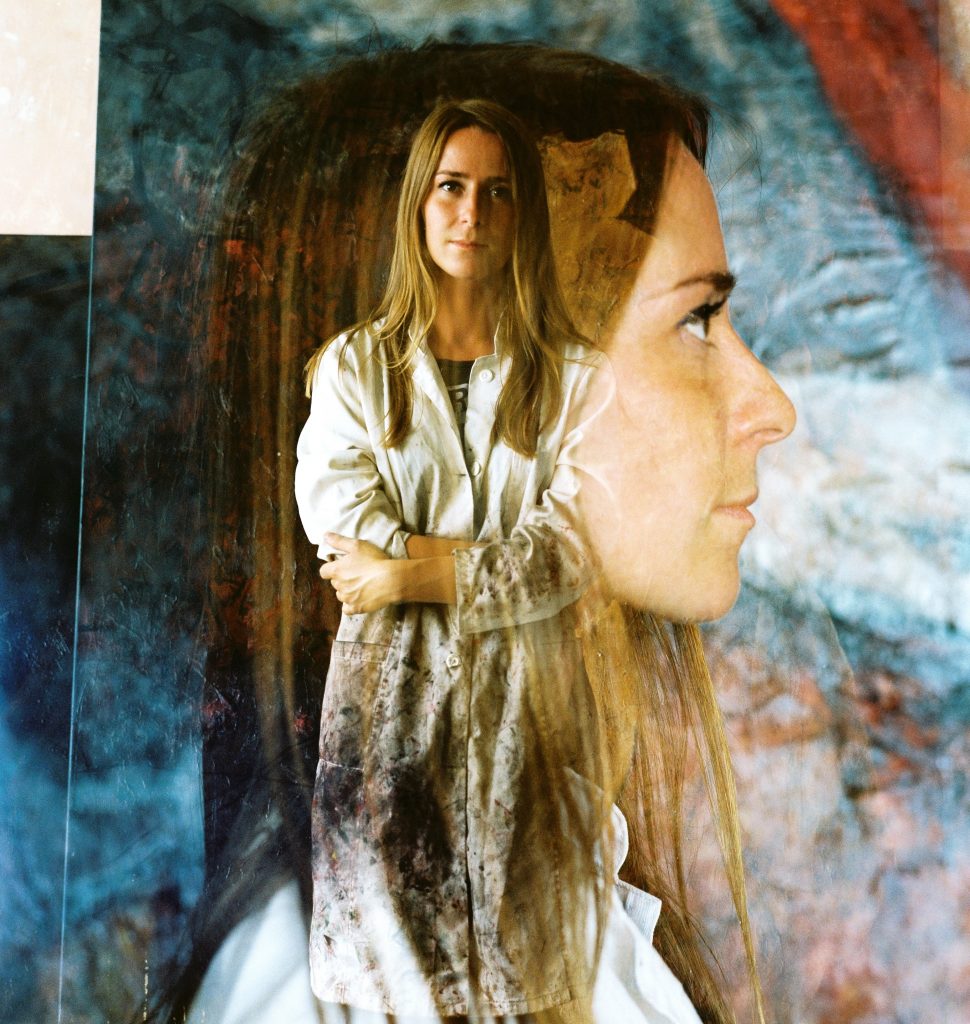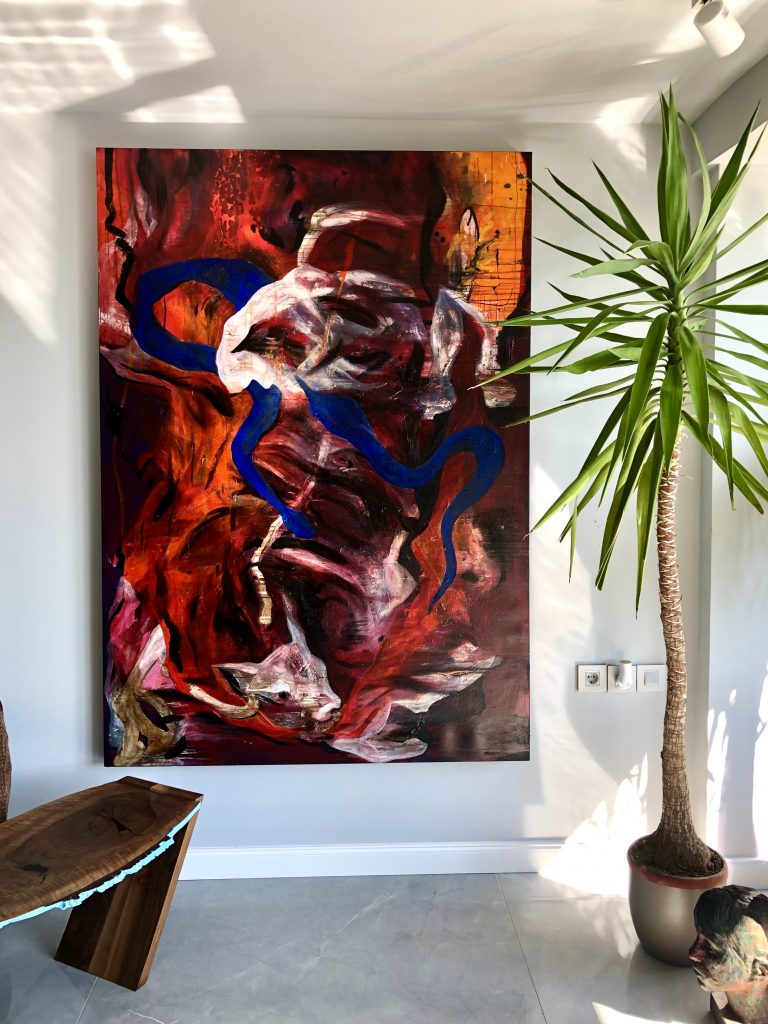Painting that follows a philosophy
Gala Čaki is one of those artists who did not compromise her artistic direction and yet has gained academic recognition and commercial success. This is an almost impossible mission for many people who want to make a living from their work and not having to betray their ideals in the process. How do her paintings change with the emergence of each new love, and how Nero, who burns everything down, and the Phoenix, who rises from the ashes, merge into artwork that screams with its own voice?

How do you manage to make a living from your work? You are the Depeche Mode of the art scene in Serbia, as you are both commercial and of high quality.
The paintings are the ones that find customers. People know what constitutes a good painting and that’s why they spend money on my work. Some spend money to enrich their spirit, home or daily life, while others invest to get rich later. I am Gala, the one who knows exactly why, where and when. The time has come to make changes in artistic creation.
We see neo-expressionism in your work. What do you see?
I would not classify my paintings as belonging to an art direction that was dominant in the 1980s which touched upon the art of Grosz and Munk. My artwork is connected to characters from philosophy, not from the painting world. The essence of my paintings is emotion, not reason. And as my paintings are a journey I take towards myself as the ultimate goal, my art is a representation of my life, and as such it is authentic.
You have spent a lot of time in Asia. How different is our art and pop culture compared to theirs?
These are two different worlds – spiritual and material. Asia has archetypes, antiquity, spirituality; basically, all that Europe is currently lacking. The art scene is rich there because Asia today is a meeting place of culture, power and innovation. It abounds in extraordinary creators: authentic personalities in the painting world and followers, i.e. creators of perfect copies of existing artwork. I am impressed by their work and the respect they have for painting.
“New man – new colour. Emotion chooses the colour itself”
Why do you use so much red and burgundy in your paintings?
I don’t always use red when painting. Each phase and the colour that dominates during a given phase is connected to the man I am with at that time. New man – new colour! Emotion chooses the colour itself. One colour is never dominant, but rather it is the atmosphere that one colour creates with other colours. Just as a certain man ennobles my creativity and is included in a game that he plays with me so does one colour also play with other colours. Relationships are crucial.
Does that mean that your men and past loves remain forever in your paintings? You did not tuck your past away? You are both Nero and the October Revolution in one – first you ‘burn’ everything down and then you bring about revolutionary justice and start fresh.
They don’t remain forever in my paintings – I sell them, or burn them, or paint them over, or just throw them away. Men are my means for creating paintings. When they serve a series of paintings, their name doesn’t matter anymore, so I replace them with others. Until I find the right one. It will be interesting to look at this phase of development with the last man in my life. The Nero in me each time ‘gives birth’ to a new world, the Phoenix-like world. My strength is of that colour and the way of surviving.
What is your dominant emotion when painting?
They are all constantly present and range from the most positive to the most negative on a daily basis. I would say that they are all dramatic. Drama triggers a range of other emotions, and as such is great for quickly perceiving a particular person or situation in which we place ourselves, or are placed in.

Why do IT people love you so much? Are they screaming inside too?
Everyone loves me. Everyone who has emotions. A soul, if you will. I love the diversity of my collectors in the setting of my profession and that similarity in emotion. Very few people can feel it. I am grateful that they come to me; that my pictures bring them to me. They enrich me in a way. They open many Bergson’s drawers, thus establishing relationships for life; special relationships.
What music do you like the most?
I don’t have music favourites. Some sounds drive me to think, some to suffer, some to work, some to muster my strength, some to clear my mind. They are different, depending on the condition I am in. A couple of months ago, I only listened to Vivaldi’s “Storm”, without being aware of why. Now I like Janice Joplin. I wondered if her work would have been so powerfully woven with emotion, had she not had an abundance of suffering. And I suffered, with her, through her and her music. I don’t listen to anything at the moment. I paint without the sounds of other creators, deeply influenced by the sound of my paintings.
So what is the soundtrack to your opus like?
Cage-like. I would like to translate 4 minutes and 33 seconds of silence, into infinite silence, letting my artwork scream with its own sound. Everything has sound. Every colour has it, but not everyone hears it.
By Žikica Milošević